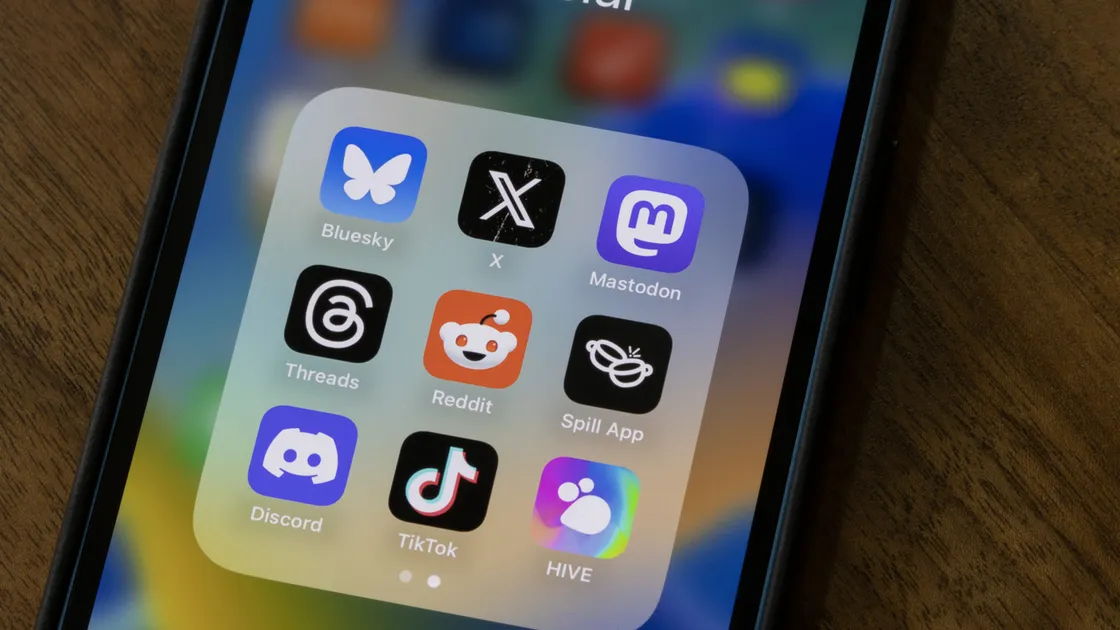Japan Influencer Marketing Free Course Guide: Strategies and Trends for the Japanese Market

Influencer marketing occupies an important position in modern digital marketing strategies. Especially in Japan, with the widespread use of social media, the influence of influencers has strengthened, and the number of companies and brands leveraging this power has increased. However, to achieve effective influencer marketing, specialized knowledge and skills are indispensable.
This article carefully selects free influencer marketing courses, introducing their features, the content covered, and what you can learn for free. Whether you’re a beginner or someone wanting to gain practical skills, this article provides content that meets a wide range of needs. Additionally, it introduces the latest trends in influencer marketing in Japan, making it valuable information for those who want to start right away, so please read until the end.
What is Influencer Marketing in Japan?
Influencer marketing is a marketing technique that uses influential individuals (influencers) to raise awareness of products and drive sales. With the spread of social media, it has become a means to reach consumers in a way different from traditional advertising.
Free Influencer Marketing Courses to Learn About Influencer Marketing in Japan
To effectively leverage influencer marketing in the Japanese market, the following practical content is available in free courses:
1. Criteria and Methods for Selecting Influencers
Learn the important points to consider when selecting influencers, such as follower count, engagement rate, and alignment with target demographics.
2. Content Creation and Distribution Methods
Learn how to create effective content (posts, stories, videos, etc.) when collaborating with influencers and understand which platforms are most suitable for each.
3. Campaign Design and Execution
Learn how to design campaigns that align with your goals and use influencers for effective promotions. Craft strategies according to target audiences and campaign objectives.
4. Measuring Results and Analyzing Effectiveness
Learn how to measure the success of campaigns and use social media analytics tools. Understand how to analyze engagement rates, CTR, and ROI to improve future strategies.
5. The Latest Trends and Platform Usage
Learn about the latest developments in popular platforms like TikTok and Instagram in Japan and the marketing strategies that respond to these changes.
6. Approaches Based on Budget
Learn cost-effective methods to maximize results with a limited budget and how to collaborate with influencers within smaller budgets.
7. Practical Case Studies
Study real examples of successful campaigns to understand how strategies were developed and influencers utilized. Learn lessons from failures to avoid mistakes.
8. Integrating Social media Ads with Influencer Marketing
Learn how to combine influencer posts with social media ads to create a more effective marketing strategy.
By learning these contents, you will be equipped to leverage influencer marketing effectively.
Advantages and Disadvantages of Free Influencer Marketing Courses
Free courses on influencer marketing offer the following advantages and disadvantages:
Advantages:
1. Cost Reduction
Since the course is free, it reduces financial burdens.
2. Basic Knowledge Acquisition
You can learn the fundamental concepts and methods of influencer marketing.
3. Flexible Learning
Many courses are offered online, allowing you to learn at your own pace.
Disadvantages:
1. Lack of In-Depth Knowledge
Free courses often have limited content, so you may not gain specialized knowledge or stay updated on the latest trends.
2. Lack of Practical Experience
These courses tend to focus on theory, so they might not provide the hands-on skills needed for actual marketing activities.
3. Limited Support
Free courses may offer fewer opportunities for questions or feedback.
Considering these factors, it’s important to actively use your self-learning motivation and seek opportunities for practice when taking free courses.
Free Influencer Marketing Courses in Japan
Here are two companies offering free influencer marketing courses in Japan:
1.Meltwater Academy – Influencer Strategy Course
• Content: Learn everything from the basics of influencer marketing to the latest trends, strategy development, and performance measurement. Focuses particularly on influencer selection and campaign management.
• Features: Free, online course. Offers learning through real-life case studies and provides knowledge that is directly applicable to actual business practices.
• How to Take: Register on the Meltwater official site and take the course online.
2.Udemy Free Course: Marketing for Beginners
• Content: Covers both basic and advanced marketing concepts, including influencer marketing. Helps you acquire practical skills.
• Features: Free Udemy course, self-paced learning. Covers a wide variety of topics, giving you a broad selection of courses.
• How to Take: Register on the Udemy official site and take the course online.
How to Maximize the Use of Free Influencer Marketing Courses
To make the most of free influencer marketing courses, consider the following approaches:
How to Create a Study Plan
1.Setting Learning Goals
First, set clear goals for what you want to achieve from the course. For example, “Understand the basics of influencer marketing” or “Learn how to design an actual campaign.”
2. Creating a Schedule
Based on the course content and your learning pace, create a weekly or monthly study plan.
3. Tracking Progress
Regularly review your progress and adjust your plan as necessary.
Practical Output Methods
1. Case Study Analysis
Analyze real-life influencer marketing case studies, identifying the key factors for success and areas for improvement.
2. Designing Simulated Campaigns
Based on what you’ve learned, try designing an influencer marketing campaign for a hypothetical product or service.
3. Getting Feedback
Share your campaign ideas with others and receive feedback to improve them.
The Latest Trends in Influencer Marketing in Japan
Influencer marketing in Japan has given rise to new trends in response to the evolution of social media and changes in consumer behavior. Recently, the following points have been gaining attention:
Utilizing TikTok and Short Videos
With the rapid growth of TikTok, marketing using “short videos” that convey the appeal of products in a short time has become mainstream. Instagram Reels and YouTube Shorts are similarly important, and visually impactful content is in demand. Short videos are easy for busy users to watch in a short amount of time and can make a strong impression quickly, making them a cost-effective influencer marketing tool. These videos are particularly effective at reaching younger audiences and boosting their purchase intentions. Additionally, short-form videos are cost-effective to produce and can be posted frequently. For success, it is essential to incorporate trendy phrases and concepts that attract viewers’ attention and create content that encourages viewers to participate, aiming for viral effects. Moreover, regularly sharing high-demand content is crucial for consistent growth.
Using Micro and Nano Influencers
In Japan, micro-influencers with a following of several thousand to tens of thousands and nano-influencers are gaining attention. These influencers have high engagement with their followers and can provide natural promotions without an overly commercial feel. Companies target these smaller influencers instead of large ones to run campaigns with more credibility. The cost-effectiveness is also a major benefit. This approach is particularly effective for niche industries, new brands or products, and small-start companies. Recently, companies that initially aimed for big sales with mega-influencers have come to realize the importance of building long-term relationships with micro-influencers for sustained promotion.
The Rise of Virtual Influencers
In Japan, virtual influencers created with AI or CGI are gaining attention. Their influence, especially among Gen Z and digital natives, is growing, and they are being used as brand ambassadors for companies. Popular virtual influencers in Japan include imma, noonoouri, and Shudu. The charm of virtual influencers lies in their ability to create characters that perfectly match a company’s image, with no changes in age or appearance. Additionally, since they lack personal consciousness, there is less risk of backlash, making long-term marketing free of trouble. Many companies are adopting this approach.
Utilizing UGC (User Generated Content)
Marketing that leverages UGC, or content created by general users, is gaining attention. Companies encourage users to experience their products and share reviews or feedback on social media to generate more authentic word-of-mouth effects. This type of content is particularly effective for products like cosmetics, fashion, and electronics, where real usage experiences are key. UGC can increase purchase intent and drive sales. Furthermore, since companies don’t need to create the content themselves, they can reduce costs while benefiting from high virality. If UGC goes viral on social media, it can reach a large audience naturally without advertising costs, making it a cost-effective marketing strategy. Moreover, UGC helps deepen the relationship between companies and users, as sharing and responding to user posts can create a stronger attachment to the brand.
Strengthening the Connection Between Social Media and E-Commerce
Influencers are increasingly guiding users directly to e-commerce sites using shopping features on platforms like Instagram and TikTok. The development of live commerce and influencer-driven “shop features” is rapidly progressing. Companies are leveraging these features to boost sales in real time.
【Effective Campaign Examples of Influencer Marketing in Japan】
1.Cosmetics Brand TikTok Campaign
A major cosmetics brand collaborated with influencers on TikTok for a “#〇〇Challenge” makeup video campaign. By making it a user-participation challenge, they achieved millions of views in a short period, leading to a sharp increase in product sales.
2.Fashion Brand x Micro-Influencers
A fashion brand employed micro-influencers on Instagram to share daily outfits. The natural posts, with less of an advertisement feel, gained support and allowed the product to penetrate the followers’ community. As a result, traffic to the e-commerce site increased significantly.
3.Gourmet x YouTube Review Campaign
A food chain collaborated with a “big-eater” influencer on YouTube to challenge a new menu item. This captured the viewers’ attention and increased foot traffic to the store. Users who watched the video spread it on social media, generating buzz.
4.Live Commerce for Immediate Sales
A clothing brand used Instagram Live for live commerce, where influencers introduced products in real time. The system allowed viewers to purchase immediately during the live broadcast, resulting in post-broadcast sales being several times higher than usual.
5.Corporate Account x Virtual Influencers
A domestic company employed virtual influencers as brand ambassadors. They conducted promotions through digital events and in the metaverse, garnering support particularly from younger generations.
Effective Campaign Examples in Japan by Social media
If you’re considering influencer marketing in Japan, here are some successful campaign examples by SNS platforms:
1. Instagram – Felicross Inc.
Felicross promoted a children’s toy camera through an influencer post. They carefully selected a parenting and lifestyle influencer whose audience aligned with the product. By offering a 10% off coupon on Instagram Stories, they encouraged followers to share the product, leading to higher engagement and potential for further spreading the message. Successful influencer selection also took into account metrics like gender ratios and reach.
2. YouTube – Lawson Inc.
Lawson collaborated with chef Ryuuji to promote their “Toro Buta Kakuni” product through a recipe video. This campaign used both YouTube and Twitter, integrating a hashtag and a retweet campaign offering prizes. The campaign achieved 3,376 retweets within six days.
3. X (formerly Twitter) – Rohto Pharmaceutical
Rohto worked with influencer “Marunouchi OL no Yuuutsu” to promote their eye drops “Risegro.” The post focused on features like “makeup stays intact,” with the influencer highlighting product benefits through engaging text and images. The campaign earned over 15,000 likes and 1,000 retweets, successfully reaching their target audience.
Conclusion
As digital transformation continues in Japan, influencer marketing is becoming increasingly important. While free courses may have limitations, they still provide valuable opportunities to enhance your skills. By leveraging resources like Meltwater Academy, Google Digital Garage, and Udemy, you can improve your strategic planning and practical marketing skills. Start learning now to elevate your marketing abilities to the next level.
Partner with hotice: Your Trusted Influencer Matchmaker in Japan
At hotice, we connect international brands with carefully selected Japanese influencers to deliver impactful and risk-free campaigns.
We offer:
・Expert influencer matching by industry and objective
・Multilingual communication support
・Campaign planning and performance tracking
・Full legal and cultural compliance
hotice supports foreign companies entering the Japanese market with PR, using celebrities and influencers.
We have previous experience in selecting appropriate creators and PR strategies, so please contact us if you have any questions.






